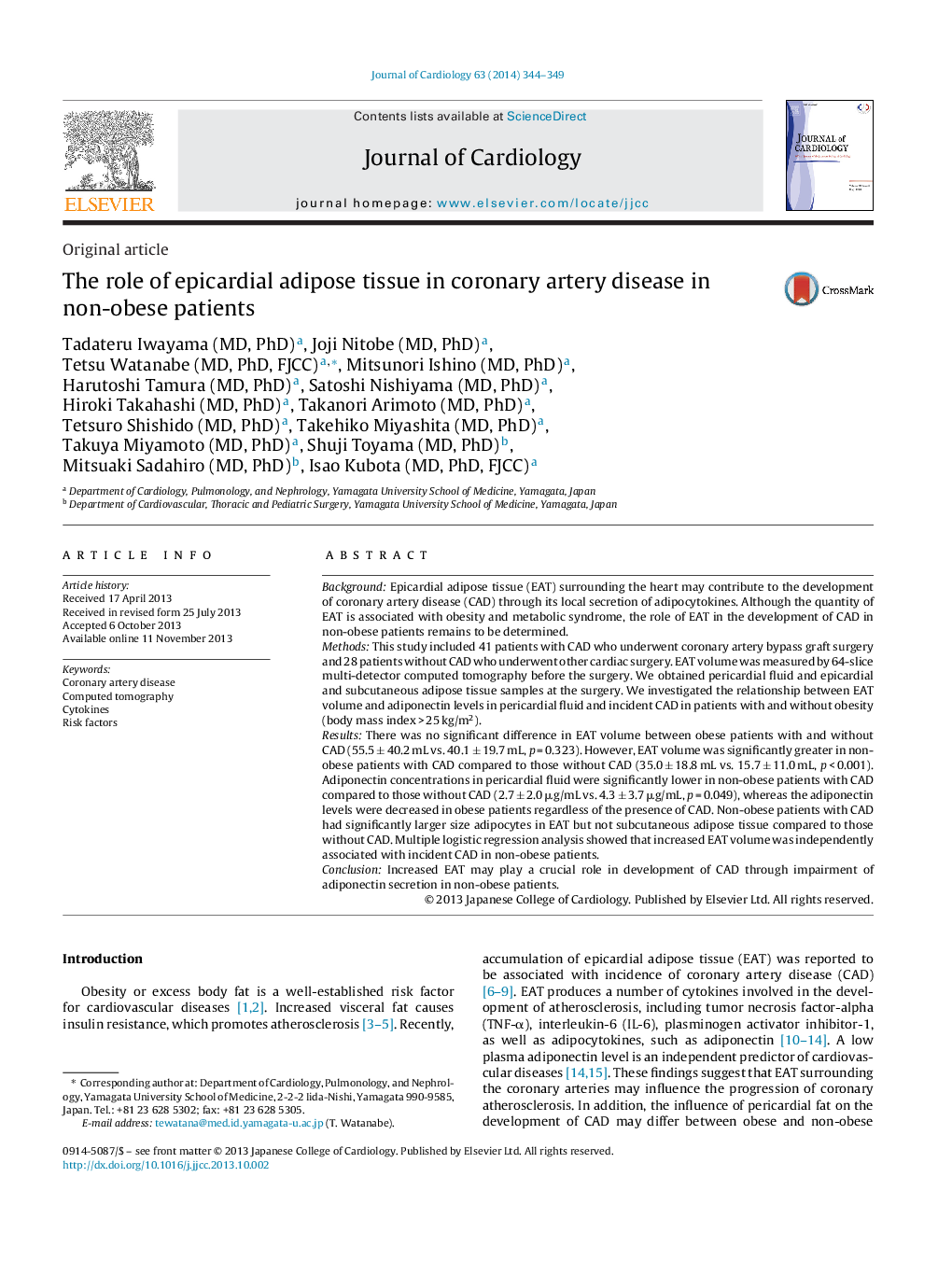| کد مقاله | کد نشریه | سال انتشار | مقاله انگلیسی | نسخه تمام متن |
|---|---|---|---|---|
| 2963038 | 1178526 | 2014 | 6 صفحه PDF | دانلود رایگان |
BackgroundEpicardial adipose tissue (EAT) surrounding the heart may contribute to the development of coronary artery disease (CAD) through its local secretion of adipocytokines. Although the quantity of EAT is associated with obesity and metabolic syndrome, the role of EAT in the development of CAD in non-obese patients remains to be determined.MethodsThis study included 41 patients with CAD who underwent coronary artery bypass graft surgery and 28 patients without CAD who underwent other cardiac surgery. EAT volume was measured by 64-slice multi-detector computed tomography before the surgery. We obtained pericardial fluid and epicardial and subcutaneous adipose tissue samples at the surgery. We investigated the relationship between EAT volume and adiponectin levels in pericardial fluid and incident CAD in patients with and without obesity (body mass index > 25 kg/m2).ResultsThere was no significant difference in EAT volume between obese patients with and without CAD (55.5 ± 40.2 mL vs. 40.1 ± 19.7 mL, p = 0.323). However, EAT volume was significantly greater in non-obese patients with CAD compared to those without CAD (35.0 ± 18.8 mL vs. 15.7 ± 11.0 mL, p < 0.001). Adiponectin concentrations in pericardial fluid were significantly lower in non-obese patients with CAD compared to those without CAD (2.7 ± 2.0 μg/mL vs. 4.3 ± 3.7 μg/mL, p = 0.049), whereas the adiponectin levels were decreased in obese patients regardless of the presence of CAD. Non-obese patients with CAD had significantly larger size adipocytes in EAT but not subcutaneous adipose tissue compared to those without CAD. Multiple logistic regression analysis showed that increased EAT volume was independently associated with incident CAD in non-obese patients.ConclusionIncreased EAT may play a crucial role in development of CAD through impairment of adiponectin secretion in non-obese patients.
Journal: Journal of Cardiology - Volume 63, Issue 5, May 2014, Pages 344–349
